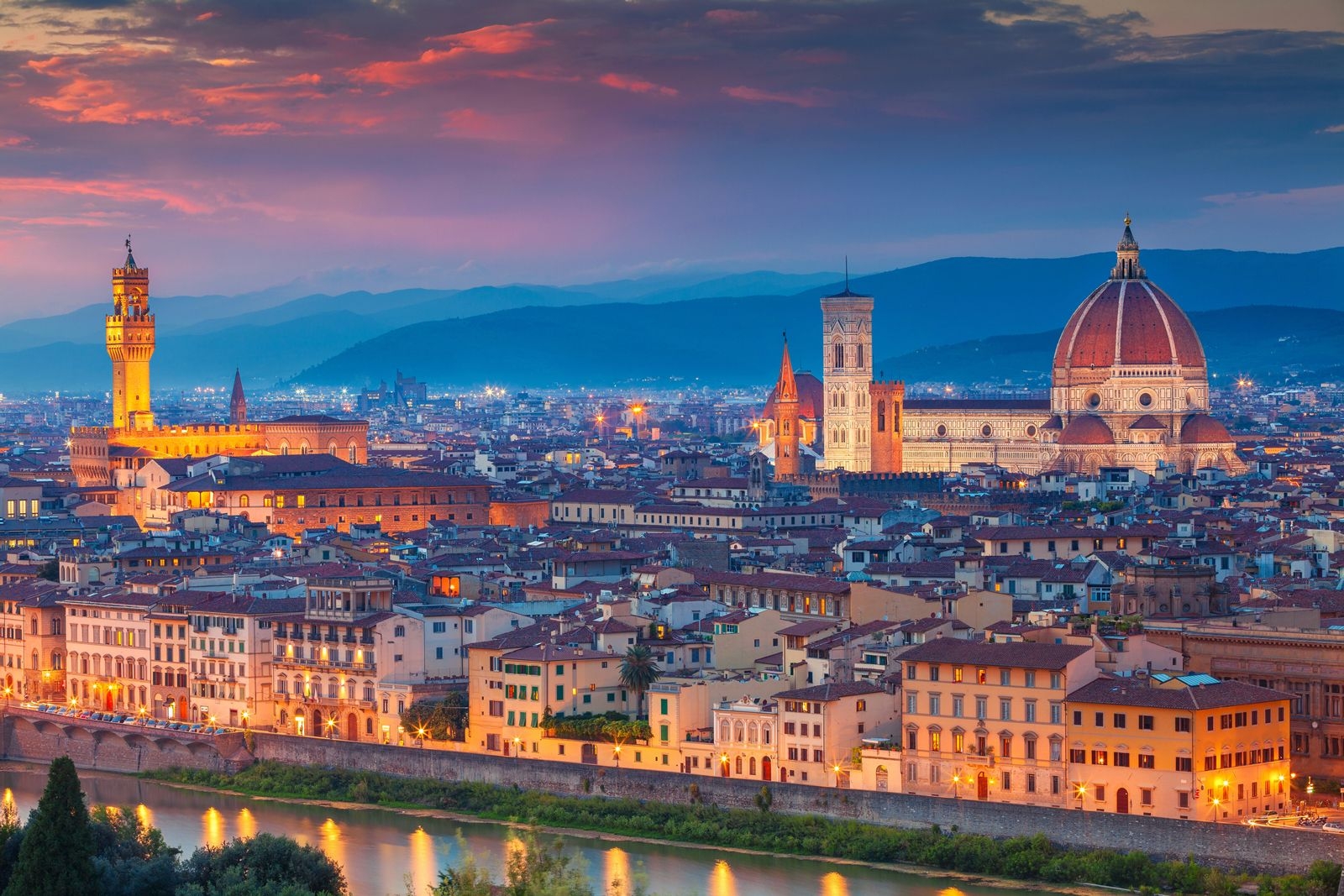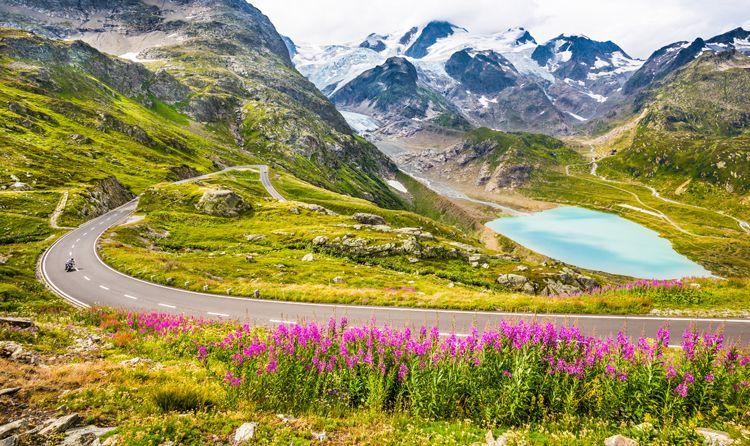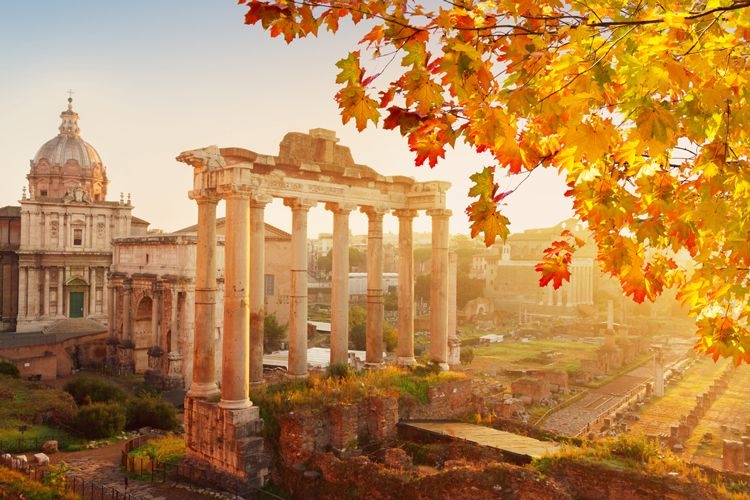
The best time to visit Italy: a month-by-month guide
Discover the best time to visit Italy with our comprehensive guide to this incredible country, which offers myriad charms and delights through the year.

The best time to visit Italy: a month-by-month guide
Famous for its historic architecture, incredible food, and exciting culture, Italy is a destination firmly at the top of many people’s must-visit wishlists. Despite drawing people from all over the world, planning the best time to visit Italy might seem a little daunting, with variations in weather, crowd levels, and seasonal events all impacting decisions. Read on for our tips on the best time to visit Italy to help you plan the ultimate vacation to this beautiful country.
Discover luxury Italy vacation rentals
Italy in January
It might not be the typical time of year to visit, but January in Italy certainly holds charms for those who prefer cool temperatures and minimal crowds. Parts of Italy see snowfall, particularly in the north of the country, and elsewhere wet weather is a common occurrence. Luckily, Italy has no shortage of incredible museums, galleries, and other indoor attractions where you can hide from the worst of the weather. On dry days, you’ll be able to enjoy the country’s most famous attractions, including Rome’s mighty Colosseum and the canals of Venice without the hubbub of crowds to contend with. Another benefit of visiting Italy in January is the opportunity to sample the hearty and warming regional cuisine of Italian regions such as thick stews, soups, and pasta dishes.
Italy weather in January
January is one of the coldest months in Italy, with varied temperatures from 32F to 50F (0C to 10C). This is great news for winter sports fans, as Italy is one of Europe’s top ski destinations. The mountainous Dolomites on Italy’s northern border with Switzerland and France see the most snowfall in January of anywhere in Italy and are home to numerous beautiful ski resorts.
Italy in February
Similarly to January, February is a less popular time to visit Italy, but that can work to your advantage. Italy’s wide landscapes take on a particularly ethereal beauty when blanketed under a film of sparkling frost, with low mist clinging to the rolling fields. In addition to the continuing ski season in the north of the country, February is a lively time in Italy’s cultural calendar. Unique events such as the Venice Carnival and the Carnevale di Viareggio take place during the month and are unforgettable experiences in these historic cities. Crowd numbers naturally pick up during these world-famous festivals, so make sure to book everything well in advance if you’re planning on attending.
Italy weather in February
February temperatures in February are almost identical to those in January, with lows of 32F and highs of 54F (0C to 12C). Given that it is firmly off-season in Italy, some restaurants and attractions that cater primarily to the tourist market may be running reduced hours or closed altogether until the spring.

Italy in March
March brings a feeling of change to Italy. Spring is around the corner, and slowly but surely, the streets begin to buzz with people once more as the sunlight peeks through the clouds of winter. The weather in Italy in March is best described as unpredictable, with some days of rain and chill winds, and others being bright and sunny. On those days when the weather is favorable, March is a wonderful month to get out and about to explore Italy’s outdoor attractions, which will be far quieter than later in the season. Popular galleries and museums, such as the Uffizi Gallery in Florence, which attracts queues of many hours during the peak summer months, are far quieter in March, making it a fantastic month to visit Italy if your priority is to hit the cultural hotspots.
Italy weather in March
Things are starting to warm up in March, with average temperatures between 46F and 63F (8C to 17C). There is still likely to be snow clinging to the slopes in the Dolomites, meaning that the ski season can easily continue through the month.
Italy in April
Come April, spring is in full swing in Italy. The weather is starting to warm up, and sunny days are becoming more and more frequent. April is a beautiful time in Italy. The landscapes from the north to the south look particularly magnificent in the hazy golden sunshine of spring, as wildflowers bloom in puffs of color in fields and thickets. Italy’s cities, already known for their exquisite beauty, take on an even more intensely mesmerizing quality when illuminated by the soft natural light that casts long shadows on cobbled streets. The likes of Rome, Florence, Milan, and Venice are still a few months away from the thronging crowds that dominate the streets during the peak months, meaning that you can enjoy the historic squares and alleyways at a more relaxed pace.
Italy weather in April
Italian temperatures in April are on a noticeable upward trajectory, reaching between 59F and 68F (15C to 20C) during the day, and turning chillier in the evenings. Layers are the key to a successful vacation in Italy in April. Pack clothing that you can add or remove as needed to keep yourself comfortable and ready to explore the country’s wonders.
Italy in May
If you’re planning a trip to Italy in May, then you have picked one of our favorite times to go to this stunning country. The final month of spring brings increasingly warm temperatures, longer days, and prolonged sunshine. The beautiful conditions begin to attract more visitors, but crowd levels are still far from the busy months of summer. Parks and streets are filled with blossom, fresh local produce is available in restaurants and delicatessens, and activities such as cycling, hiking, and city sightseeing are at the top of many itineraries.
Italy weather in May
Temperatures generally hover around 65 - 75F (18 - 23C), making for comfortable exploring conditions. There might be the odd rainy spell in Italy in May, although the majority of days will be filled with sunshine. Evenings can still have a slight chill to them in May, although it is perfectly reasonable to enjoy alfresco dinners with the aid of a light jumper.

Italy in June
Summer sets upon Italy in June. For those planning a June vacation in Italy, endless days of sunshine await, with a pleasant climate getting increasingly warmed as we get further south. The island of Sicily in particular can see very hot daytime temperatures during the summer months. June is a lovely time to visit Italy, particularly for those wanting to explore the countryside, beaches, and small regional towns and villages. Large cities such as Rome, Naples, and Milan start to get busier as June progresses, although most will still find the weather and crowd levels comfortable enough to warrant taking a city break this month. Northern areas, particularly the lakes, can see an increased amount of rainfall and thunderstorms during June, but thankfully, there are plenty of indoor attractions in which you can take cover on the occasion of rainy days.
Italy weather in June
Temperatures in Italy in June average around 77F (25C) in the daytime, while evening temperatures are generally about 59F (15C). However, the south of Italy, in regions such as Puglia and Sicily can see temperatures of 86F (30C) or higher.
Italy in July
Summer is in full swing in July in Italy, with gorgeous hot weather and a packed social calendar making it one of the most popular months to visit for people from all over the world. With school breaks in progress for many travelers, July sees the arrival of lots of families in Italy, keen to get to grips with the country’s fascinating historic sites, delicious cuisine and famous culture. July is a fantastic month for a beach vacation in Italy, with coastal destinations such as the Amalfi Coast, Sardinia, and Tuscany offering beautiful beaches with unbeatable Mediterranean views. It is also a busy month in Italy’s social calendar, one of the most famous events taking place being the Palio horse race in Siena, which draws crowds from miles around to see the historic spectacle of horses charging through the dusty streets of the old city.
Italy weather in July
Temperatures often reach 86F (30C) and above during the daytime, and even hotter in the south, with high humidity in the middle part of the day. This can make exploring Italy’s large and more crowded destinations such as Venice and Florence a little uncomfortable. Luckily, there are plenty of air-conditioned museums to duck into if the heat and the crowds get too cloying.
Italy in August
August is the hottest and busiest month in Italy. In addition to schools being out across the US and Europe, many Italians take their vacations during August. This means that popular sites across the country will be crowded with people. Combine this with the high levels of humidity and heat in Italy and August, and you get less-than-ideal conditions for truly enjoying this remarkable destination. However, if you can cope with busy crowds and high heat, then there is plenty to enjoy in Italy in August. The beaches and coastal regions are wonderful during this month, as are the lakes in the north - which enjoy cooler temperatures than many cities in August. The high temperatures also give you the perfect excuse to try out as many different flavors of gelato as you can. Although sunshine is pretty much guaranteed, the high humidity can also lead to thunderstorms, usually in the afternoons, accompanied by short but intense showers.
Italy weather in August
Temperatures in Italy in August start at 86F (30C) and go up from there, even reaching as high as 104F (40C) in some sun-baked destinations. This can obviously be uncomfortable for some, and strenuous activity during the middle part of the day is ill-advised, but early morning and late afternoons should be cool enough to enjoy the myriad attractions that Italy has to offer.
Italy in September
September is one of our favorite months to visit Italy. The intense heat of the summer months begins to dissipate along with the crowds, leaving in their wake cities and attractions devoid of the clamor, but not the charm. During the first month of fall, Italy feels as though it’s taking a deep cleansing breath after the rush of the peak season, and as life returns to normal, you’ll find city streets and popular attractions far more accessible without the throng of people and cameras. Restaurants, museums, historic sites, and other Italian must-sees all remain open during September, so if you want to tick things off from your Italian bucket list, then September is a fantastic time to go.
Italy weather in September
Average daytime temperatures in Italy in September are around 72-77F (22-25C), which is very comfortable for exploring cities, getting in a cheeky beach day, or simply relaxing in your vacation rental. September is the ‘do-all’ month, when everything is on the table as far as activities, excursions, and sightseeing are concerned.

Italy in October
October is a magical time in Italy. Fall foliage is at its most spectacular this month, with the previously green hills and fields blazing in russet and gold tones, making October a wonderful time for nature enthusiasts and photographers to visit. Major Italian cities such as Rome and Florence are generally calm and quiet in October, it being the final month before the winter weather truly sets in. Most tourists have long since departed the country, so you may find that attractions and restaurants start to reduce their opening hours during October, so plan accordingly. Rain showers become more frequent this month, but with a decent jacket and umbrella, they won’t be a barrier to exploring the streets and sites that you’ll be able to enjoy with just a handful of other people. There is likely to be plenty of dry, sunny days between the showers.
Italy weather in October
Temperatures in Italy in October are slipping away from the intense heat of summer, with a wide range of conditions from the north to the south. Highs reach around 64F (18C) in the north, and as high as 73F (23C) in the south during the day, before falling away considerably at night.
Italy in November
The split between conditions in northern and southern Italy are very noticeable in November. Whereas the south still basks in mild temperatures and sunshine, northern destinations such as Turin, the lake district, and Venice start to show signs of the creeping tendrils of winter, with temperatures falling, nights drawing in, and increasing amounts of rainfall. Although that may sound rather unfavorable, November is actually a lovely time to visit Italy if you prioritize peace and calm over the heady, noisy day of summer. Attractions and sites in Italy are very quiet in November, so it’s a good time to breeze through sites such as the Colosseum, the Cinque Terre, and St Mark’s Square without being shoulder to shoulder with other visitors. It is also a wonderful time to indulge in some whole and hearty regional cuisine.
Italy weather in November
As previously mentioned, temperatures in Italy in November can fluctuate wildly depending on geographical location. Cities in the central-southern regions have average temperatures during the day in the 50s and 60s (10-18C), while northern areas are more likely to be in the 40s and 50s (5-12C), even colder once the sun goes down. The Italian Alps are likely to be colder still, with the first flurries of snowfall dancing across the peaks and high-altitude areas.
Italy in December
It’s the most wonderful time of the year, and December is certainly a unique and rewarding time to visit Italy. Although many think of the country primarily as a summer destination, the heart of winter brings out a different side, with festive markets, dark nights, and frost-glittered landscapes turning the cities and rolling fields into a perfect winter wonderland. December in Italy is generally quiet for overseas tourists meaning that you’ll be able to enjoy hitherto packed cities with only locals for company, and indulge in unique winter Italian delicacies such as roasted chestnuts, truffles, and thick, warming soups. Around the holiday season, Italian destinations buzz with excitement around quaint stalls and sprawling markets to celebrate the season, where you purchase handmade local gifts and goods to take home. There are also regional food markets where you can sample delights such as panettone.
Italy weather in December
Temperatures in December in Italy are certainly chilly. 50F (10C) is about as high as it’ll get in the central and northern regions, with many days feeling much colder. In fact, it’s not uncommon for temperatures to dip below freezing in some northern cities such as Milan.
So, when is the best time to visit Italy?
Italy is a charming destination, and with beach destinations and winter sports wonders, it’s a great place to visit at any time. However, if you’re looking for a balance of fewer people, comfortable temperatures, and plenty of things to do, then our top months to visit Italy are April, May, September, and October.
Explore more Italy vacation rentals















